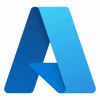Generally Available: Geo Priority Replication for Azure Blob
Generally Available: Geo Priority Replication for Azure Blob
Geo priority replication enhances the replication process for GRS and GZRS storage accounts by enabling accelerated data replication between the primary and secondary regions. This feature is backed by a Service Level Agreement (SLA), ensuring the Last Sync Time for Block Blob data remains at 15 minutes or less, 99.0% of the billing month. With this guaranteed sync time, users can feel more confident about their data’s durability and availability, especially if an unexpected outage occurs in their primary region and a failover is required.
Geo Priority Replication applies to Block Blob. For more information on Geo Priority Replication and its functionality, please refer to Geo Priority Replication.
Generally Available: Object Replication Priority Replication for Azure Blob
Object replication priority replication will allow users to obtain prioritized replication from the source to the destination storage account of their replication policy. When you enable priority replication, you can benefit from the associated Service Level Agreement if your source and destination account are located within the same continent. The SLA will guarantee 99.0% of operations are replicated from the source container to the destination container of your OR policy within 15 minutes for the billing month.
Generally Available: Troubleshoot Azure Firewall using packet capture
Packet capture is meant to capture specific flows for customers which can be filtered based on protocol, flags and filters. Packet captures can be initiated via a portal experience or via code using PowerShell.
Learn more:
For more information on how to use packet capture, see Troubleshoot Azure Firewall using Packet capture | Microsoft Learn
for a walkthrough on how to use the feature with examples of captures of various flows see Deep Dive into Network Troubleshooting with Azure Firewall’s Packet Capture | Microsoft Tech Community
Generally Available: Application Gateway for Containers with Web Application Firewall (WAF)
Announcing Azure Web Application Firewall (WAF) support for Azure Application Gateway for Containers is now generally available. Application Gateway for Containers is the next evolution of Application Gateway + Application Gateway Ingress Controller. With the addition of Azure WAF support, Application Gateway for Containers workloads can now protect workloads from web-based attacks like SQL injections, cross-site scripting, protocol anomalies, and more.
When using WAF to protect your Application Gateway for Containers resources you get access to the Azure-managed Default Rulesets (DRS), providing protection not only from threats identified by the Open Web Application Security Project (OWASP), but also additional protections provided by Microsoft’s Threat Intelligence Center (MSTIC). Application Gateway for Containers WAF users also have access to bot protection via bot manager rulesets and protection against DDoS attacks using rate limiting custom rules.
Generally Available: labels() function in KQL graph semantics
The labels() function in KQL graph semantics is now generally available. This function enables you to retrieve, filter, and project label information for nodes and edges in your graph queries, making it easier to work with categorized graph data.
The labels() function works with graph models in both Fabric Eventhouse and Azure Data Explorer, allowing you to:
- Filter graph elements by their labels to focus on specific node or edge types
- Project label information in query results for better data understanding
- Use labels with collection functions like any(), all(), and map() for advanced pattern matching
- Access labels of intermediate nodes in variable-length paths using inner_nodes()
Labels can be either static (fixed labels assigned to node or edge types) or dynamic (labels derived from data properties during graph construction), giving you flexibility in how you organize and query your graph data.Learn more.
Public Preview: openCypher support for KQL graph semantics
Announcing openCypher support for KQL graph semantics, bringing the widely adopted open-source graph query language to your graph data. This update allows you to run openCypher queries on any Fabric Eventhouse or Azure Data Explorer, making it easier to work with graph data using a popular, declarative pattern matching syntax.
openCypher provides ASCII-art style pattern matching that intuitively represents graph relationships, making complex graph queries more readable and easier to write.
Generally Available: Azure Database for PostgreSQL – Flexible Server availability zones expansion in Japan West
Now you can deploy Azure Database for PostgreSQL flexible server in all three availability zones in Japan West.
Generally Available: Ultra Disk’s new flexible provisioning model
Announcing the General Availability of Ultra Disk’s new flexible provisioning model.
This enhancement gives you the freedom to configure capacity, IOPS, and throughput (MBPS) more independently—so you can tailor performance to your workload needs and optimize total cost of ownership. These improvements are available for both new and existing Ultra Disks.
Below is a comparison of the new enhancements versus the previous state
Generally Available: Object Replication Metrics
Blob storage Object Replication metrics for pending operations and pending bytes are now generally available in all regions. These replication metrics will empower you to optimize the performance, troubleshoot replication delays, and maintain high availability across your Object Replication policies.
The two metrics that will provide deeper visibility and insights into your object replication progress are:
- Pending Operations: Tracks the total number of operations pending replication from the source to the destination storage account of your OR policy
- Pending Bytes: Tracks the total volume of data pending replication from the source to the destination storage account of your OR policy
Open Source: Announcing the DocumentDB Kubernetes Operator
Now you can use the open-source DocumentDB Kubernetes Operator to run DocumentDB on Kubernetes. DocumentDB is a Mongo-DB–compatible, open-source document database built on PostgreSQL. The operator extends Kubernetes with custom resource definitions (CRDs) and makes it easier for you to deploy and manage DocumentDB clusters using familiar tools such as kubectl and Helm.
Generally Available: Azure HBv5-series VMs
Azure HBv5-series VM is now generally availalbe in the Azure South Central US region. HBv5 VMs are optimized for memory bandwidth-intensive HPC applications, such as computational fluid dynamics, automotive and aerospace simulations, weather modeling, energy research, molecular dynamics, computer aided engineering, and more. HBv5 VMs feature 6.7 TB/s of memory bandwidth across 450 GB (438 GiB) of memory (HBM) capacity. Also included are 368 4th Generation EPYC™ processor cores with a 3.5 GHz base frequency, 4 GHz boost frequency, and no simultaneous multithreading. HBv5-series VMs also provide 800 Gb/s of InfiniBand from NVIDIA Networking to enable supercomputer-scale MPI workloads, and 15 TiB of local NVMe SSD storage with up to 50 GB/s (reads) and 30 GB/s (writes) of block device performance.
Public Preview: Azure NetApp Files Object REST API
The Object REST API, an S3-compatible REST API, on Azure NetApp Files bridges the gap between traditional file-based storage and modern cloud services, enabling customers to use their existing data in new ways. By providing integration via Microsoft Fabric with Azure AI services, native S3 access from modern applications, and other Azure services, customers can unlock new use cases, reduce costs, and accelerate innovation.


